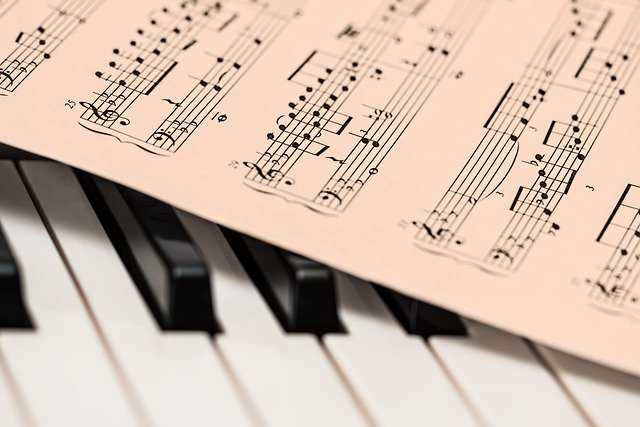Forgotten Scores: The Unheralded Art of Video Game Composers
In a world where film soundtracks earn Grammy accolades and operatic compositions fill prestigious concert halls, another realm of musical genius often remains in the shadows of recognition. Video game music—once relegated to bleeps and bloops—has evolved into sophisticated orchestral arrangements and innovative sonic landscapes that shape our gaming experiences in profound ways. Despite creating works that millions of people experience daily, video game composers rarely receive the mainstream artistic recognition their film and television counterparts enjoy, even as their craft has reached comparable levels of complexity and emotional resonance.

The Sonic Evolution from 8-Bit to Orchestral
The journey of video game music spans a remarkable technological and artistic transformation. In the 1970s and early 1980s, technical limitations forced composers to work within extremely narrow parameters—often with just three or four sound channels available. These constraints birthed a unique form of musical minimalism, where composers like Koji Kondo (Super Mario Bros.) and Hirokazu Tanaka (Metroid) created memorable themes using only simple waveforms. Despite these limitations, these early pioneers established musical motifs that would become culturally iconic.
As technology advanced through the 16-bit era of the early 1990s, composers gained access to more sophisticated sound chips. Nobuo Uematsu leveraged these improvements in the Final Fantasy series, crafting more complex melodies and harmonies that conveyed deeper emotional narratives. The transition to CD-ROM technology marked another watershed moment, allowing for recorded music rather than synthesized sounds. Composers like Yasunori Mitsuda (Chrono Trigger) and Yoko Shimomura (Kingdom Hearts) began incorporating instrumental performances and vocal arrangements, elevating game soundtracks to new artistic heights.
Today’s AAA game productions often feature full symphonic orchestras, with budgets rivaling Hollywood films. Composers like Austin Wintory, whose score for Journey became the first video game soundtrack nominated for a Grammy Award, now craft hours of adaptive music that responds dynamically to player actions. This evolution represents not just technological advancement but a fundamental artistic progression that has largely occurred outside mainstream critical recognition.
The Technical Artistry of Adaptive Composition
What distinguishes video game music from other compositional forms is its inherently interactive nature. Unlike the linear progression of film or television scores, game music must adapt to unpredictable player actions while maintaining emotional coherence. This technical requirement has spawned innovative compositional techniques rarely acknowledged outside gaming circles.
Composers employ sophisticated layering systems where musical elements intensify or recede based on gameplay situations. Jesper Kyd’s work on the Assassin’s Creed series demonstrates this approach, with seamless transitions between stealth, exploration, and combat music that maintain thematic continuity. Horizontal re-sequencing—where musical segments are rearranged in real-time—and vertical layering—where instrumental tracks are added or removed based on tension levels—represent compositional innovations unique to this medium.
The challenge of creating music that remains engaging during potentially repetitive gameplay scenarios has led to procedural composition techniques. Mick Gordon’s work on DOOM (2016) incorporated algorithmic elements that subtly vary with each playthrough, while games like No Man’s Sky feature fully generative soundtracks created by 65daysofstatic and Paul Weir that algorithmically construct music from sonic building blocks—creating unique soundscapes for the game’s quintillions of procedurally generated planets.
These adaptive techniques represent significant innovations in compositional practice, yet they remain largely unexamined in traditional music education and criticism. The technical complexity of such work often exceeds that of linear composition, requiring both musical artistry and programming knowledge.
Cultural Impact Beyond the Console
Despite its relative critical obscurity, video game music has achieved remarkable cultural influence. Concert series like Video Games Live and Distant Worlds regularly sell out prestigious venues worldwide, performing orchestral arrangements of game music to audiences who might never attend traditional classical concerts. The London Philharmonic Orchestra has recorded multiple albums of video game themes, while conservatories including Berklee College of Music now offer specialized courses in interactive scoring.
The accessibility of game music has introduced classical compositional techniques to generations of listeners who might otherwise never encounter them. Koji Kondo’s Super Mario Bros. theme has become one of the most recognizable musical motifs globally—instantly identifiable across cultural and linguistic boundaries. For many young people, game soundtracks serve as gateway experiences to orchestral music appreciation.
This cultural impact extends to artistic influence as well. The nostalgic 8-bit sounds of early game music have spawned entire musical genres, with chiptune artists repurposing vintage gaming hardware as musical instruments. Meanwhile, contemporary composers like Hans Zimmer have incorporated techniques pioneered in game music into film scores, creating a cross-pollination between media. Game composers Jessica Curry and Austin Wintory have successfully crossed over to concert hall compositions, bringing interactive music sensibilities to traditional performance contexts.
Despite this widespread influence, mainstream arts coverage continues to marginalize game music, relegating it to specialized publications rather than treating it as a legitimate contemporary compositional form worthy of serious critical attention.
The Recognition Gap and Critical Blindspots
The disparity in recognition between film composers and their gaming counterparts reveals persistent hierarchical biases in arts criticism. While film composer John Williams holds five Academy Awards among fifty-two nominations, even the most acclaimed game composers struggle for mainstream acknowledgment. The prestigious awards systems that validate other forms of composition have been slow to incorporate interactive music categories.
This recognition gap stems partly from lingering perceptions of games as mere entertainment rather than artistic works. Critical frameworks developed for linear media often prove inadequate for evaluating interactive compositions, whose success depends on player-responsive adaptation rather than predetermined emotional arcs. Traditional music criticism lacks vocabulary and methodologies for analyzing systems-based composition, where the composer creates musical possibilities rather than fixed sequences.
Academic music programs have similarly lagged in incorporating game music studies, despite their technical sophistication and cultural significance. While film scoring programs exist at major conservatories worldwide, dedicated game music curricula remain relatively rare. This institutional neglect perpetuates a cycle where interactive composition techniques remain undertheorized and undervalued in artistic discourse.
The Next Compositional Frontier
As interactive technologies continue evolving, game music stands at the forefront of compositional innovation. Virtual reality environments present unprecedented challenges and opportunities for spatial audio design, while artificial intelligence offers new possibilities for truly responsive musical systems that can generate emotionally appropriate scores in real-time based on player actions and emotional states.
Composers like Gareth Coker (Ori series) and Sarah Schachner (Assassin’s Creed Origins) are pushing these boundaries, creating scores that function both as interactive experiences and as standalone listening. The integration of procedural generation with human compositional sensibilities represents a new artistic frontier with applications beyond gaming—potentially revolutionizing how we experience music in other interactive contexts from smart environments to personalized entertainment.
As barriers between different media continue dissolving, the techniques pioneered by game composers increasingly influence broader musical practice. The fluid, adaptive structures of game music align with contemporary compositional trends toward open forms and listener agency, suggesting these approaches may become more central to music’s future evolution rather than remaining a specialized subfield.
For this potential to be fully realized, however, critical frameworks must evolve to properly evaluate and contextualize interactive music. Only through expanded recognition of game composition as a legitimate artistic practice can these innovations receive the cultural attention and institutional support they merit. The composers creating these works deserve acknowledgment not merely as entertainment providers but as significant artistic voices advancing the boundaries of contemporary composition.




